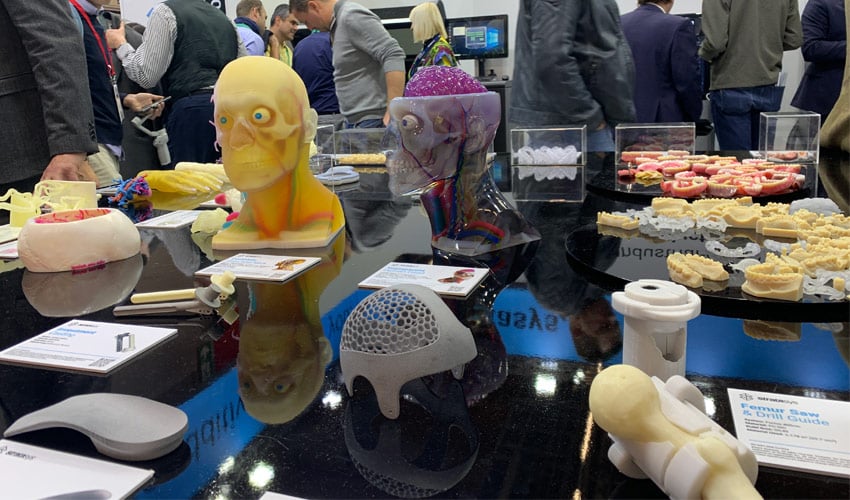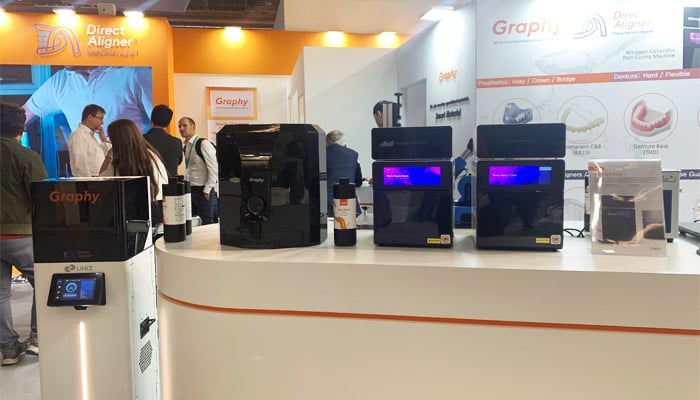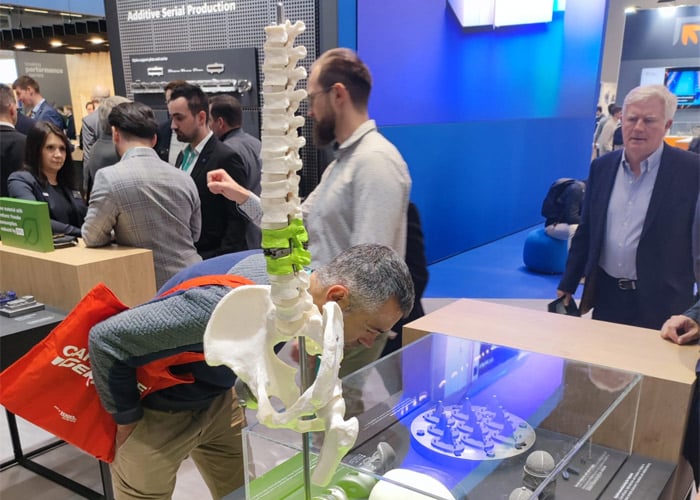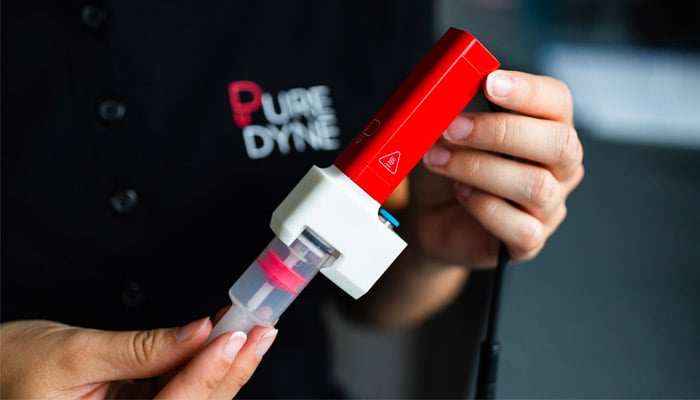The Medical Sector at Formnext 2023: Manufacturers and Market Applications

While the additive manufacturing event has been in full swing in Frankfurt since Tuesday, we wanted to focus on one of the market verticals that has been a major user of 3D technologies for several years now: medical. If several market studies are to be believed, it’s a sector that’s growing exponentially, and at the same time, when you keep the advantages of 3D printing in mind, it’s easy to see why. Customization of devices that become more adapted to each patient, the biocompatibility of certain materials, the possibility of reproducing the mechanisms and textures of the human body, and so on. Strolling the aisles of Formnext 2023, we were able to discover a number of applications in the medical sector, with some exhibitors specializing in this market more specifically, focusing in particular on dentistry.
Manufacturers Serving the Medical Sector at Formnext 2023
The medical sector is a vertical market addressed by many manufacturers of 3D printers, materials and service providers. Additive manufacturing is now an increasingly useful tool for many healthcare professionals, so much so that some market players have developed specific offers. At Formnext 2023, we spoke to German manufacturer Orthonative 3D, which has developed the MAX3D FDM/FFF Medical 3D printer for orthodontists. He explained to us that these healthcare professionals need solutions that are easy to handle, repeatable and reliable: not being printer operators, they want to rely on a simple, effective process.

Graphy’s solutions on display at Formnext
Staying within the dental sector, the number of dedicated machines present at Formnext this year were beyond counting. These include Italy’s DWS with its D-Fab solution, Rapidshape and its range of resin 3D printers, and Asiga, all present at this year’s show. As for material manufacturers, they were also numerous in presenting their solutions – mainly resin for dental applications, as you’d expect. We were particularly impressed by Graphy, a Korean company that has designed Tera Harz TC-85 resin for direct 3D printing of aligners, without the need for thermoforming. The company also offers its own LCD machine and post-processing solutions.
Moving away from dentistry, we noted the presence of a few manufacturers of filaments dedicated to the medical sector. LugoLabs is one of them: the Korean company produces filaments that approximate human bone. Three offers are currently available, enabling the reproduction of bone density, color and behavior in medical imaging. We can also mention French company Lattice Medical, which is exhibiting its various filaments for the medical sector, as well as RODIN, its implantable and absorbable medical device for reconstructing soft skin tissue.
Dedicated Medical Applications
Numerous stands at Formnext 2023 showcased 3D-printed medical devices, implants and surgical models. Industry giants such as Trumpf, Stratasys, HP, Arburg, EOS and 3D Systems exhibited a wide range of medical applications, from plagiocephaly helmets and 3D-printed spinal implants to prostheses, orthoses and realistic anatomical models. Lynxter’s booth featured one of their latest projects with the young startup Odapt, which designs 3D-printed silicone ostomy disks.

Medical applications on display at the Trumpf booth
One exhibitor of particular interest to us was MEDICAL IP, a Korean company that has developed a range of medical imaging analysis technologies based on AI and 3D technologies. Its MEDIP PRO product, for example, is a 3D modeling software package that enables the creation of digital twins and supports various file formats (STL, OBJ or 3MF). The company also offers a solution called ANATDEL: 3D printed models for surgical planning, simulation and medical research for neurosurgery, orthopedics, cardiology or dermatology.
Finally, we wanted to tell you about Pure Dyne, a company that has developed print heads for bioprinting, capable of depositing hydrogels in a precise, controlled manner thanks to a stepper motor. They offer volumetric distribution of low- to high-viscosity biomaterials.

Photo credits: Pure Dyne
What do you think of the role of the medical sector presented at Formnext 2023? Let us know in a comment below or on our LinkedIn, Facebook, and Twitter pages! Don’t forget to sign up for our free weekly Newsletter here, the latest 3D printing news straight to your inbox! You can also find all our videos on our YouTube channel.
*All photo credits: 3Dnatives






